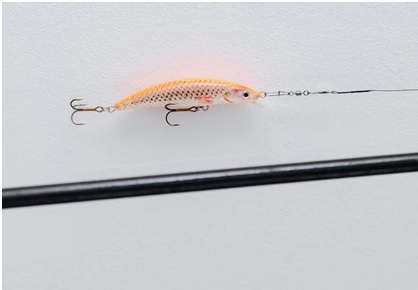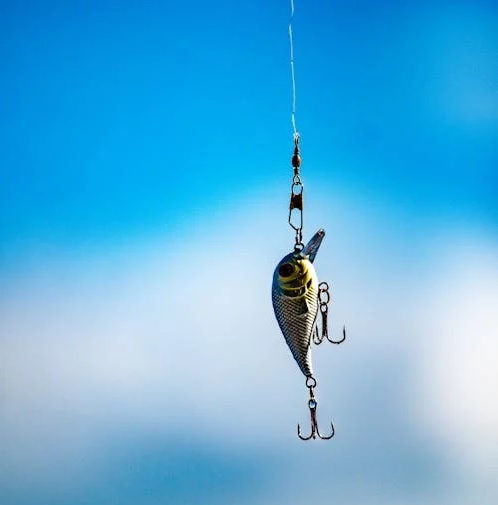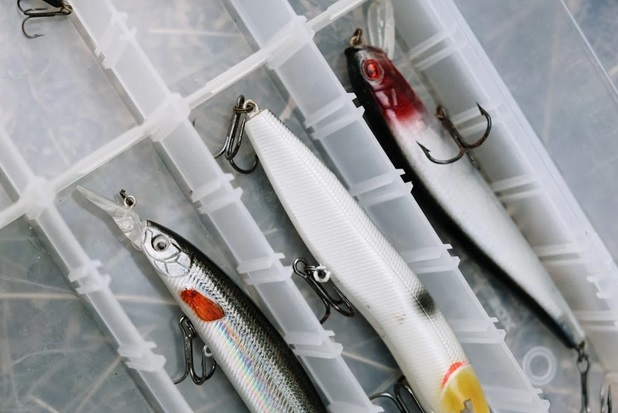Posted by Forrest on May 1st 2024
5 Types of Plugs/Crankbaits Every Angler Needs to Carry
Your Hobie kayak may be loaded with fishing kayak accessories, but if you don’t have at least a few of each of these different types of plugs in your tackle box, there are times of year when you’re going to miss fish.
Plugs in general, and crankbaits, a type of plug characterized by a fatter body and (usually) a diving lip, are among the most versatile types of artificial baits out there, and like soft baits can be fished shallow, deep, fast, slow, and everything in between. There are even suspending plugs that stay right where you pause them in the water column.
Every fishing kayak needs at least a few…
Lipless Plugs (Like Rat-L-Traps)
Lipless plugs, the most famous of which are Rat-L-Traps and Cotton Cordell Super Spot plugs, are sinking plugs without a diving lip that can be worked fast or slow, anywhere in the water column.
Because they do not float and do not have a diving lip, you can control exactly how deeply you work the lure; the only two things you can’t do with lipless plugs are pause them at a certain depth in the water column or use them as topwaters.
Jerkbaits

Jerkbaits are elongated plugs that are usually fished with a rapid twitch or a slashing action, causing them to dart back and forth in the water, which is highly attractive to aggressive fish and commonly incites a reaction strike.
Popular jerkbaits include Bomber Long A and Rapala Husky Jerk plugs, as well as Rebel Minnows. The Bomber Long A and Rebel Minnow float back to the surface when paused; the Rapala Husky Jerk, one of the most versatile of all plugs, is a neutral buoyancy lure. This means it will stay right where it is when paused.
This unique feature among plugs gives anglers the ability to pause a Husky Jerk anywhere in the water column from the surface to its maximum diving depth (in the larger models around 8 feet). It also allows fishermen to pause the lure without it sinking or rising out of the strike zone, enticing skittish fish.
Deep-Diving, Floating Crankbaits
The majority of crankbaits have long, wide bills that cause them to dive deep when retrieved, or cranked, hence the name. Some crankbaits can dive 20 feet or deeper when trolled. Most of them are either neutral buoyancy or float.
This gives anglers the ability to fish them anywhere in the water column from the surface to their max diving depth, which can be quite deep. Most crankbaits feature a wide profile which displaces a lot of water, as well as internal rattles that make a lot of noise. At many times of year, including before and during the spawn, large, fat crankbaits can be the most effective lures on the lake to entice large bass to bite.
Shallow Diving Crankbaits

Shallow diving crankbaits are like deep-diving crankbaits because they have smaller bills, in most instances, set into the front of the lure at a much sharper angle. All else being equal, the shallower the angle of the bill, the deeper the plug will dive.
Shallow diving crankbaits are like their deeper-diving counterparts in all ways (including how to fish them) except that they won’t run as deep. This makes them ideal for casting and trolling in shallow bodies of water, or those choked with weeds or logs.
Shallow divers are also useful when presenting a cast up or at the shoreline, such as when spawn fishing, because you can work them aggressively without the lure running too deep or getting buried in the mud.
Square Bill, Floating Crankbaits
Square-billed crankbaits can run either shallow or deep, but are unique from round-billed crankbaits in that they are perfect for deflecting off of cover.
A crankbait with a square bill is less likely to snag when it encounters a piling, log, rock, or other structure, which is good news because it keeps the lure free. But the other half of the picture is that the acoustic signature created by ripping and banging the lure off of structure often entices fish to bite out of curiosity or aggression.
Plug and Crankbait Fishing Techniques
There are many ways in which plugs and crankbaits can be fished, including but not limited to:
- Straight retrieve: Straight retrieves are those in which the lure is cast and then retrieved at a steady pace, back to the angler. Usually, this is the least effective method for fishing a plug but it can be effective, especially with lipless plugs.
- Burning the lure: Burning a lure is a method in which the angler casts and then cranks the lure back as quickly as possible. This is a variation on the straight retrieve that can be effective when fish are very aggressive, or to draw a reaction strike.
- Twitching the lure: This technique requires the angler to present the plug, and retrieve it in bursts either by cranking the reel or twitching the rod tip, or a combination of both. The angler must impart pauses to the cadence, at which point the strike usually occurs when the lure is motionless, sinking, or rising.
- Yo-yo/jigging: Yo-yoing or jigging a lure only works with lures that sink, such as lipless crankbaits. The fisherman must cast the lure, allow it to sink, then sharply raise the rod tip before allowing the lure to fall back a few feet through the water column, then repeating the cadence. This can be effective when fish are holding deep.
- Jerking: To jerk a plug, the lure is cast, retrieved a few cranks, then the angler slashes the rod tip sharply up or to the left or right, giving a lure an erratic, quick, darting motion. This can be one of the most highly effective techniques of all, and is best practiced with elongated plugs, known as jerkbaits or stickbaits.
- Stop-and-go: Stop-and-go is a variation of twitching, in which the lure is cast, retrieved a few cranks, then allowed to pause, before intermittently beginning the retrieve. It is also a highly effective technique that commonly produces, especially on skittish fish, and can be used with all types of plugs covered here.

Alright, So What Are Some Plugs/Crankbaits My Tackle Box Needs?
Ready to round out your tackle boxes with some more plugs? Here are some of the top selections:
Lipless crankbaits:
- Rat-L-Traps
- Cotton Cordell Super Spot
- Rapala Rippin’ Rap
- Rapala Rattlin’ Rap
- Strike King Red-Eyed Shad
Jerkbaits:
- Rapala Original Floater
- Rapala Jointed Minnow
- Rapala Husky Jerk
- Rebel Minnow
- Bomber Long A
- Strike King KVD Jerkbait
Deep divers:
- Bomber Model A
- Bomber Flat A
- Bomber Fat Free Shad
- Rapala Fat Rap
- Rapala DT Series
- Strike King XD Series
- Strike King Pro Model Series
Shallow divers:
- Strike King Bitsy Minnow
- Bomber Flat A
- Bomber Square A
Square bills:
- Bomber Square A
- Strike King KVD Square Bill
This list only covers a few of the most popular crankbaits and plugs on the market, and there are many others - but this is a good place to start.
Load Up the Hobie Kayak and Hit the Water
Getting ready to hit the water for the first time of the season? As the water temperatures rise, fish are often at their most aggressive of the year, before, during, and immediately after the spawn. Fishing plugs using the techniques mentioned in this article can be extremely effective in early to mid-spring, so gear up the Hobie kayak and put some of these into practice today.

